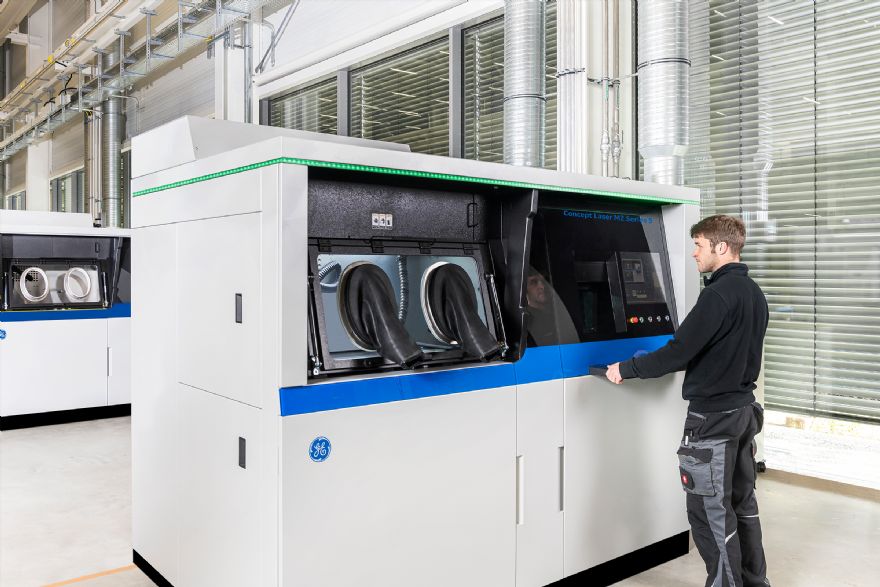
As metal additive technology continues to gain momentum in the design and industrial production of new aerospace components, GE Aviation’s Loyang facility (Singapore) is the first maintenance, repair and overhaul (MRO) facility worldwide that has been approved to use metal additive manufacturing (AM) for commercial jet engine component repairs. GE Aviation Engine Services Singapore (GE AESS) currently employs more than 1,700 staff in the city-state and accounts for more than 60% of
GE Aviation’s global repair volume.
3-D printed parts are typically printed using STL files generated from CAD drawings. However, this works only for new-make production where the goal is to produce identical parts conforming to the blueprint. When repairing used parts, however, the repair has to be customised for each individual part because each part wears differently during service, although additive technology in repairs also offers the possibility of embracing complexity, rather than shying away from it.
Chen Keng Nam, the executive manufacturing leader at GE AESS in Singapore, who has been involved in the application of metal additive, said: “This disruptive technology can be used for lots of applications, not only in aviation. When I see beyond the realm of repair into new-make, it’s mind-blowing to see the parts that we can design and print using additive. Now designers are making use of the ability to produce new designs that couldn't be imagined or manufactured before with traditional methods.”
Iain Rodger, managing director at GE AESS, also sees the potential for metal additive technology in MRO. He said: “In this part of the supply chain our customers truly value faster turn-round time, and that is what we are achieving. Using our GE Additive Concept Laser M2 machines typically halves the amount of time it takes us to repair specific aircraft parts. We are already using additive technology to repair parts in GE Aviation’s CF6 engines; the next goal is to include parts on the CFM56, the best-selling engine in commercial aviation history.”
One example is the repair of high-pressure compressor (HPC) blades that run at high speeds and tight clearances within aircraft engines. They face regular erosion and wear and tear that, over time, demand continuous repair and replacement. Repairing these blade tips used to require a long process of cutting, welding and grinding to create the proper shape.
However, GE Aviation has established an automated additive manufacturing (AM) process to repair the HPC blade tips, saving time and costs associated with labour and machining. The company created image-analysis software that maps the shape of a used blade and creates customised instructions for the Concept Laser M2 machine to build a new tip with precise alignment and profile that can be finished with minimal additional processing.
Mr Rodger added: “Productivity has increased with our employees able to repair twice as many parts in a day compared to the conventional repair process. Less equipment is also needed for post-processing, so the floor space required is reduced by one-third. Furthermore, we are currently assessing what we are going to do in turbine parts and other components beyond compressors.
“To me one of the significant advantages of additive is its sustainability. This is going to allow us to repair more parts and throw fewer parts into the bin, use less energy, generate less waste and have a smaller footprint. Repair capability is a big part of the sustainability journey. As the industry expands and new technology is developed, that will only increase.”